The term conceptual art is often associated with non-material type situations, where object qualities like beauty or physical presence come second to the primacy of a more esoteric or abstract idea. So when a noted devotee of rigorous conceptual strategy produces lofty, hefty, brightly hued, image rich, emotional, experiential mixed media works such as those currently on view at Hauser & Wirth, it’s worth taking note. This is Charles Gaines, for whom it has always been important to reconcile what he sees as a false dichotomy between idea and aesthetic.
“I’m not anti-beauty,” Gaines tells the Weekly. “I just require that it be presented within a rigorous critical system.” Indeed the new Gridwork pieces in Palm Trees and Other Works — plexiglass, acrylic paint and photograph constructions all made in 2019, each between nine and 12 feet tall — are both compelling, prismatic visual feats as well as direct expressions of a very specifically devised and strictly followed formula for their production. “It’s using a certain idea of geometry to construct a system that is about translating an idea without losing sight of the object,” says Gaines. “I can do this and call it art.”
The towering works are shallow clear boxes, each a stack of two, at the back of which are life-size, high contrast, black-and-white photographs of trees from dry Palm Springs desert regions. The boxes are skinned with a fine black filament in a grid-like math paper or a Thomas Guide, lettered and numbered. On the hovering front, plexi face are paintings of the same trees, executed in a paint-by-numbers-like application of color-coded hues, corresponding to the system Gaines set in place and to which all the “Numbers and Trees: Palm Canyon, Palm Trees Series 2” works adhere.
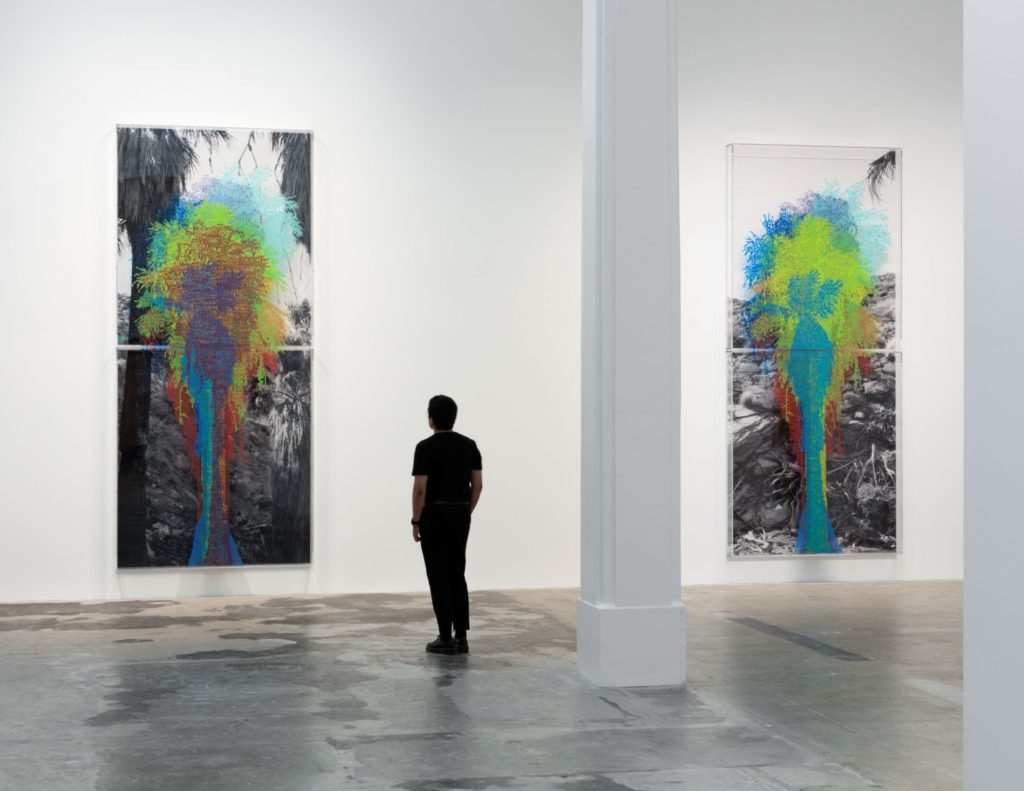
Installation view, Charles Gaines. Palm Trees and Other Works, Hauser & Wirth Los Angeles, 2019 (Courtesy the artist and Hauser & Wirth / Photo: Fredrik Nilsen)
The overall effect is an auric pixelation that spreads into something microscopically gestural as one approaches close enough to appreciation the tension between the mechanical grid and the slightly variegated hand-applied pigments, each marked with its tint number. By leaving the system and process prominently in place in the finished work, Gaines makes sure people can never escape or overlook it. It’s actively operational in the image, both interrupting and creating itself at the same time. For Gaines, this is all about giving people insight into the origin story of the object as well as to their experience of it.
“When you go into an art gallery you’re not necessarily thinking of that experience as being part of this whole accumulation of knowledge,” Gaines observes. “Essentially you’re in there to be aesthetically entertained. So the risk is that people will dismiss the critical component of the work and just deal with the aesthetic, so it’s very important that the system be accessible so that you can’t separate it from the effects of its conduction. What you see when you look at a work of art is an encounter with the imagination and intuition of the artist.” What interests Gaines are strategies that take that into account, positing the gallery as a site for the acquisition of knowledge.
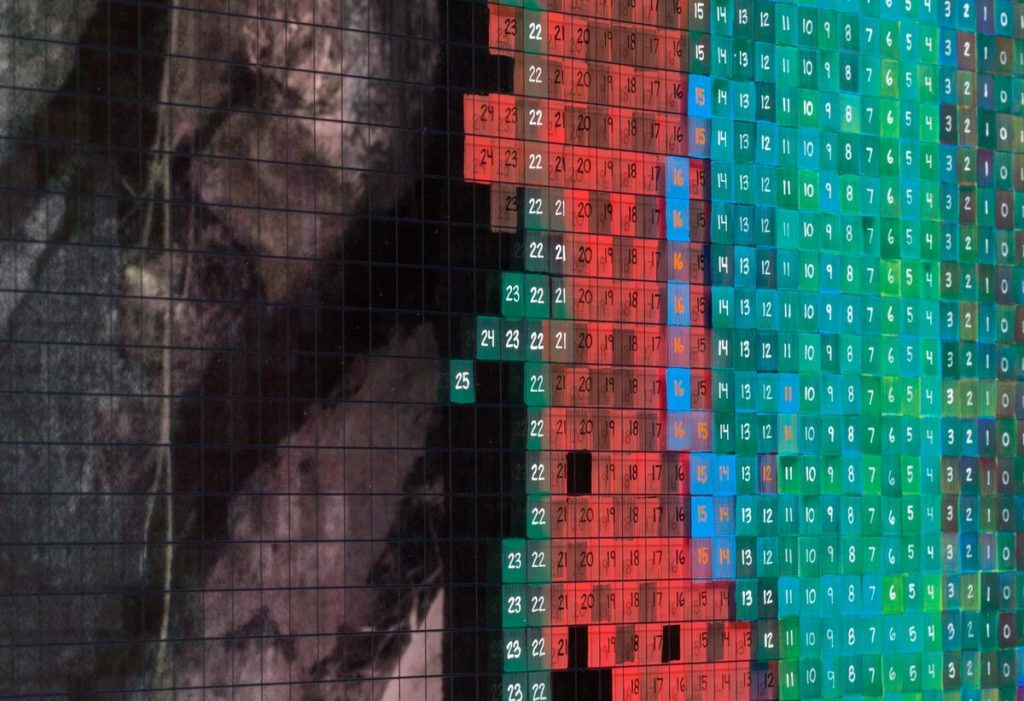
Charles Gaines, Numbers and Trees: Palm Canyon, Palm Trees Series 2, Tree #10, Tübatulabal (Detail), 2019. Acrylic sheet, acrylic paint, photograph, two parts, 145 x 64 x 5 3/4 in (Courtesy Hauser & Wirth)
Speaking of which, Gaines is also a teacher, a legendary CalArts professor whose investment in critical thinking and philosophy has influenced generations of artists from Mark Bradford to Edgar Arceneaux and Andrea Bowers. In this spirit, Gaines repurposed the gallery’s Book & Printed Matter Lab into a classroom, where he has been offering the free, public “Library of Ideas” lecture series on “the tenets of aesthetics and critical theory in art,” most Thursday nights through December 9. The sessions are recorded and played during gallery hours throughout the run of the exhibition.
These lectures are not about his own work; instead they cover relevant topics in recent art history, while offering an implicit critique of the gallery as a transaction commercial space, and revives it as a potential place of learning. “I’m not advocating any certain way of making art over any other,” Gaines says. “But just for me, I found a way of making art from a particular standpoint that was influenced by non-western thinking about what can be art, that sees art as a universal practice not any one specific cultural practice. The very definition of what was considered ‘universal’ had itself been informed by the restrictive and racist history of imperialism.” And Gaines is looking for something with a more expanded range of social and cultural functions that western capitalism has mostly offered.
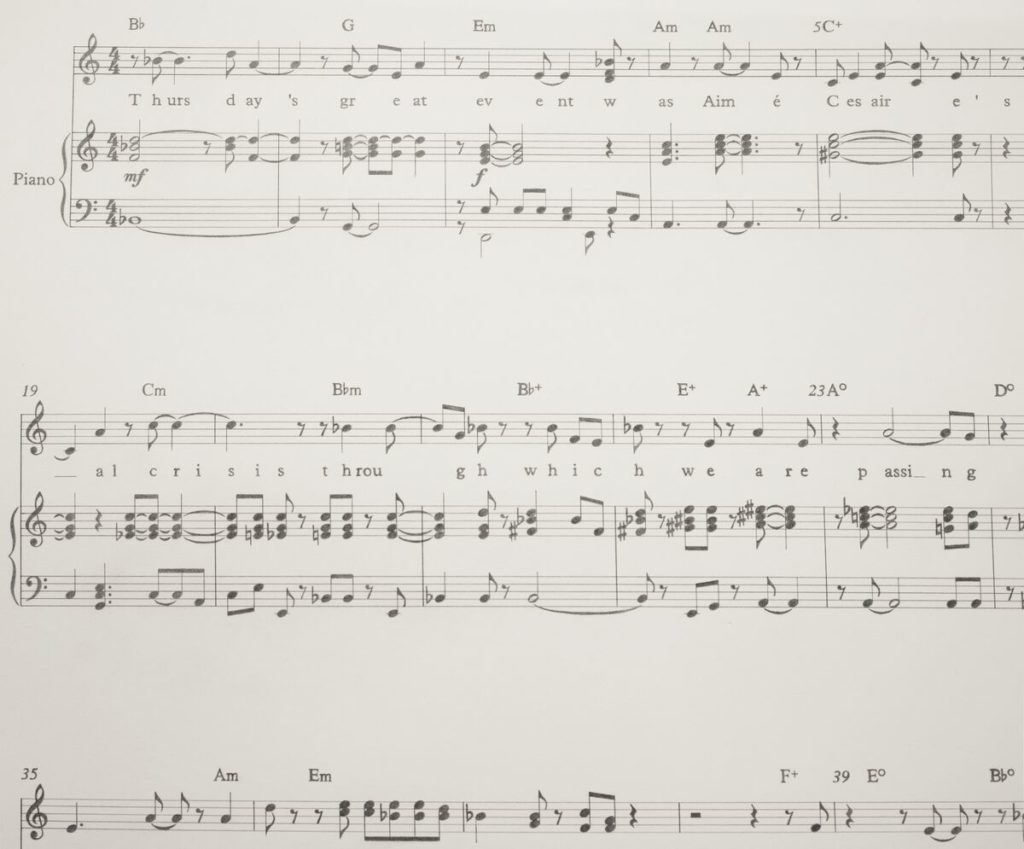
Charles Gaines, Manifestos 3 (Detail), 2018. Single-channel video (color, sound) Two graphite drawings on paper, one monitor, one pedestal, two speakers, hanging speaker shelves (Courtesy Hauser & Wirth)
This cultural vigilance is even more apparent in another work on view. “Manifestos 3” (2018) also uses an original notational system to translate — but instead of numbers and colors, it’s text and music notes. The text of Martin Luther King Jr.’s 1967 speech at the University of Newcastle upon Tyne, wherein King calls out the pernicious threats of racism, poverty, and war; and James Baldwin’s 1957 essay “Princes and Powers,” are each transcribed into sheet music (in the form of large-scale drawings) using a system of A-H and rest spaces, before the compositions are played on piano. The effect is organic but asymmetrical like a raga, soft music with a loosely speech-like poetic pattern transmuting words of powerful intensity and urgency.
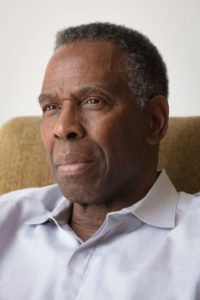
Charles Gaines (Courtesy the artist and Hauser & Wirth / Photo: Fredrik Nilsen)
And that’s the other thing — there’s another long-term aspect to Gaines and his creative outlets and that is music. Specifically jazz. It’s canonical elevation of improvisation is a reliable metaphor for the complex interaction of structure and freedom in art and in life, but jazz for Gaines is more than an allegory. He drums and composes with a rotating cast of gifted players in The Charles Gaines Ensemble, and yes he would agree that he’s attracted to the idea that a jazz solo, an elegant seemingly ad hoc riff, is not possible without the support of a system. “Improvisation also has a structure,” Gaines says, “as well as the freedom not to follow certain practices. But when there is a strategy in place, a sense of possibility unfolds, grounded in the system you have internalized.”
With that, Gaines leaves the table. His band is playing at the opening that night and it’s time to go rehearse.
Palm Trees and Other Works is on view at Hauser & Wirth Los Angeles in the downtown Arts District through January 5. hauserwirth.com.
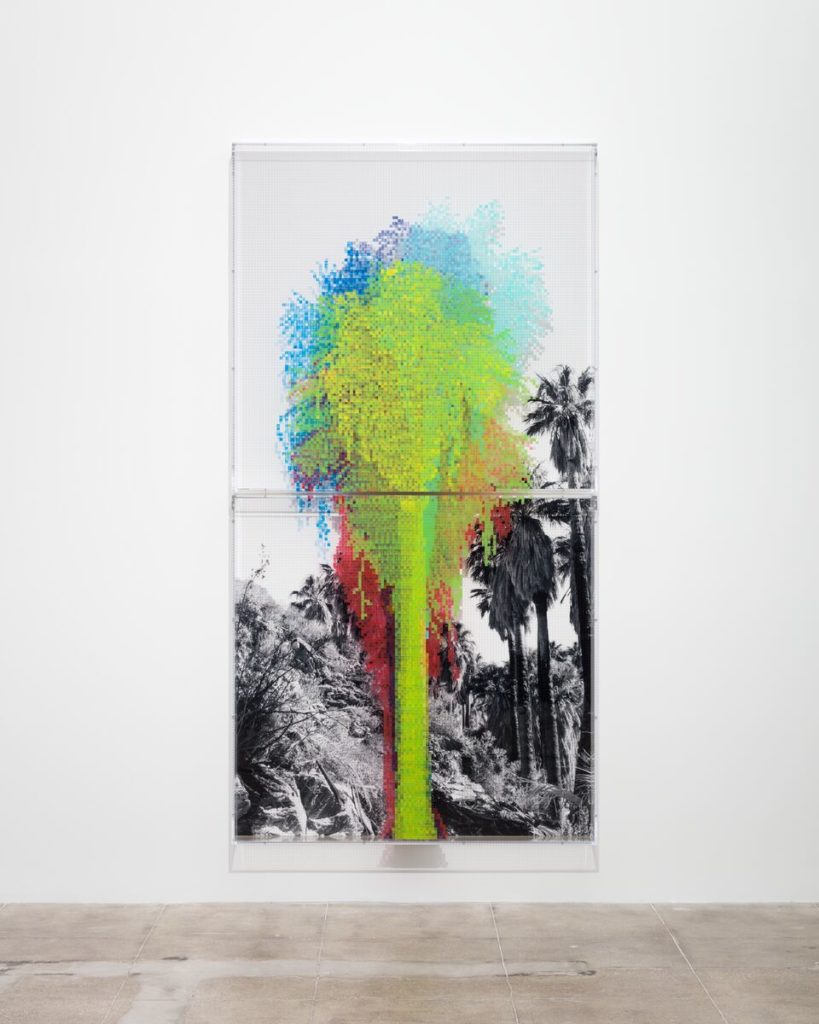
Charles Gaines, Numbers and Trees: Palm Canyon, Palm Trees Series 2, Tree #7, Mission, 2019. Acrylic sheet, acrylic paint, photograph, two parts, 109 1/4 x 57 x 5 3/4 in (Courtesy Hauser & Wirth)
Advertising disclosure: We may receive compensation for some of the links in our stories. Thank you for supporting LA Weekly and our advertisers.

